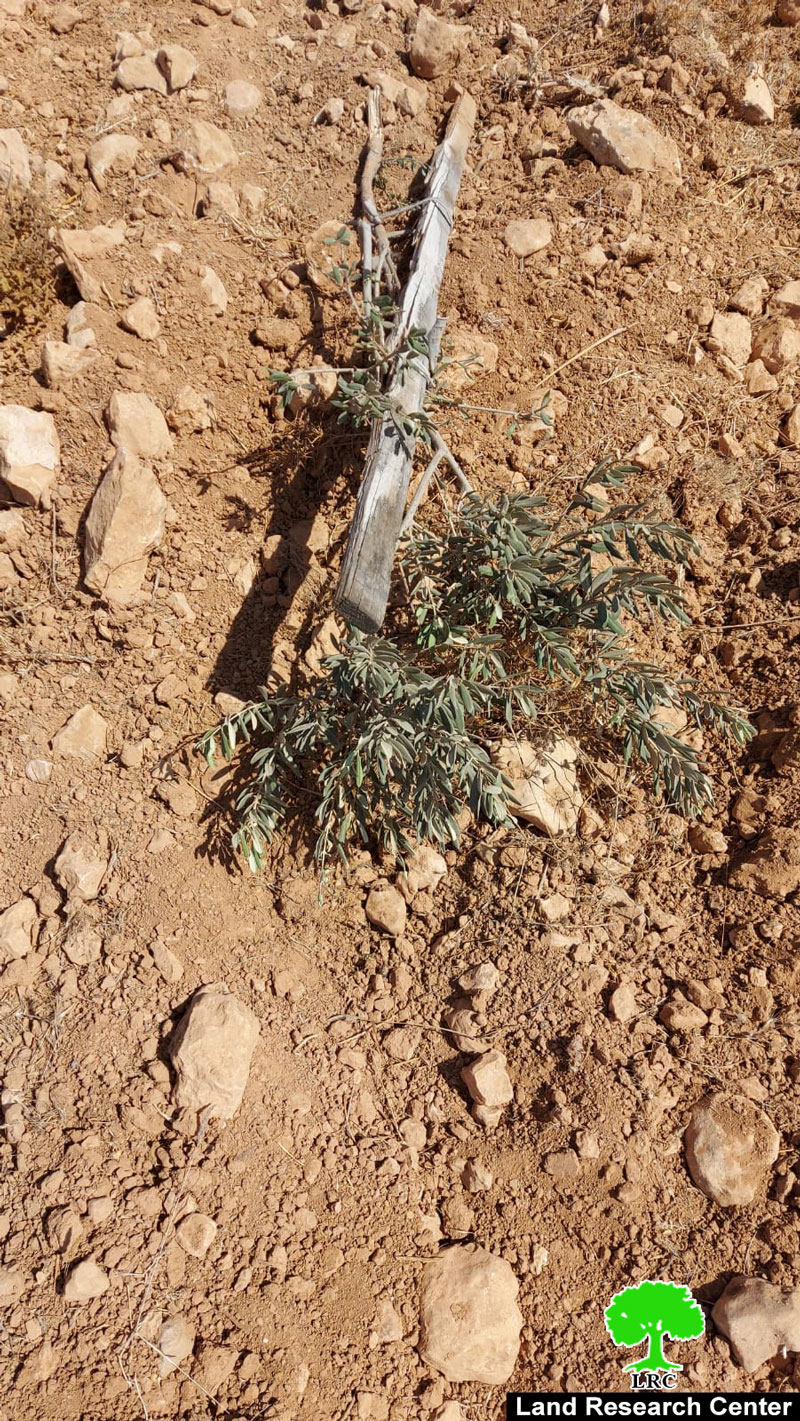2020-09-30
Destroying an agricultural barrack and confiscating two tents in Fasayil village, north of Jericho
Violation: the demolition of an agricultural barrack and the confiscation of two residential tents.
Location: Fasayil Village / Jericho Governorate.
Violation Date: 30/09/2020.
Perpetrator: the so-called Israeli Civil Administration.
Affected people: Two families from the Nawoura family.
Violation details:
On Wednesday morning, September 30, 2020, the Israeli occupation army stormed the village of Fasayil Al-Wusta, north of Jericho, and proceeded to confiscate two tents for housing that had previously been donated by the Palestinian Red Crescent Society to the family of Nawoura after the demolition of their residential and agricultural facilities in the Fasayil area on 25/8 / 2020 under the pretext of being built on an archaeological area which is located about 600m to the west of road No. 9.
In addition, the occupation authorities demolished a 60-square-meter mineral agricultural barrack used for raising sheep.
The following table shows details of the damage gathered by LRC's field worker
Name of victim | # family member | # of children | # cattle heads | Type of facility Affected | Notes |
Musa Ali EidAllahNawoura | 5 | 1 | 65 | - Confiscating a 45m2 residential tent - Demolishing of a 60m2 sheep barrack | His house previously demolished |
Emad Musa Ali Nawoura | 3 | 1 | 0 | Confiscating a 45m2 residential tent | His house previously demolished |
Total | 8 | 2 | 65 |
It is noteworthy that the community of the village of Fasayil al-Wusta is located in the heart of the Central Jordan Valley, 17 km north of Jericho, and all of its residents come from different areas, for example, the origin of the Rashaida family that resides in the community goes back to the displaced village of EinGeddi in 1948. The majority of the displaced population today resides in more than one area, including Al-Maarajat, Al-Nuweima and Al-Auja, in addition to the villages of Bethlehem. As for the Ghazal and Abayat families, their origins go back to the villages of Bethlehem Governorate.
Likewise, the Israeli occupation considers the Fasayil area a "governmental land" prohibited for Palestinian use, therefore, the occupation authorities have repeatedly threatened the residents of these communities with dismissal.
In the meanwhile, inhabitants of this community have submitted numerous petitions to the Israeli Supreme Court to allow them to reside in the area, but in 2008 the court refused all these petitions and called for the immediate displacement of the 140 inhabitants.
The area has been a scene of successive attacks by the occupation authorities in the shape of demotions, stopping construction, threats of dismissal.
Legal Commentary:
The demolition and threat of Palestinian housing and installations by the occupation authorities is part of their violations of international and humanitarian law, and the violation of a right of Palestinian citizens guaranteed by international law and international treaties, which is the right to adequate housing, within the following articles:
• Article 147 of the Fourth Geneva Convention, which states that “Destruction and usurpation of property in a manner not justified by military necessity and on a large scale in an unlawful and arbitrary manner.
• Article 53 of the Fourth Geneva Convention of 1948 prohibits the destruction of property, as this article states the following: “The occupying power is prohibited from destroying any fixed or movable private property related to individuals or groups, the state or public authorities, or social or cooperative organizations. Unless the war operations inevitably require this destruction.
• Article 33 of the Fourth Geneva Convention states: “No protected person may be punished for an offense he or she has not personally committed.
• It is especially forbidden to destroy or seize the enemy's property, unless such destruction or seizure be imperatively demanded by the necessities of war;
• Article 17 of the Universal Declaration of Human Rights, dated December 10, 1948 states that “No one shall be arbitrarily deprived of his property”.

This document was prepared with EU funding
The Contents of this document are LRC responsibility and do not reflect EU positions


